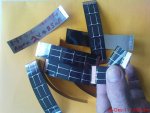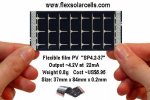Does anyone have any experience using the Hope RFM31 RF data reciever, I believe this module uses the Silicon Labs Si4330.
I just cant get a data link to work at all, my transmitter (the matching RFM42 RF transmitter) is sending out something, I can hear it on an audio receiver, but the RFM31\Si4330 stays mute. I know how to drive the RFM42 transmitter in direct modulation mode via one of the GPIO pins, that works.
These are not simple devices, lots of options for transmitting preambles, headers and packets.
There is some sample code in C, which I have (I think) extracted the register setup sequence to be used in Basic, but no joy.
Just wondering if someone else has tried to get these devices working ?
I just cant get a data link to work at all, my transmitter (the matching RFM42 RF transmitter) is sending out something, I can hear it on an audio receiver, but the RFM31\Si4330 stays mute. I know how to drive the RFM42 transmitter in direct modulation mode via one of the GPIO pins, that works.
These are not simple devices, lots of options for transmitting preambles, headers and packets.
There is some sample code in C, which I have (I think) extracted the register setup sequence to be used in Basic, but no joy.
Just wondering if someone else has tried to get these devices working ?



